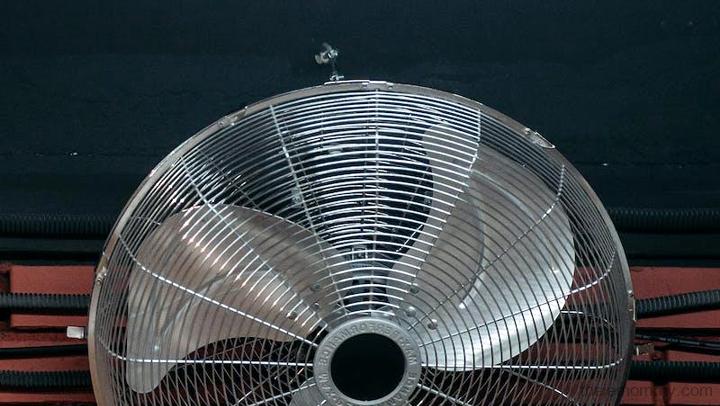How Humidifying Fans Work
Humidifying fans work by adding moisture to the air. They turn water into breathable vapor which is then circulated through a ventilation system. Some humidifying fans have an in-built humidity sensor that monitors the rise of humidity within a space; when it detects a humidity level above a preset level, it automatically turns on the fan.
Advantages of Humidifying Fans
Humidifying fans have several advantages. They combine cooling and moisturizing to improve air quality. They add moisture to the air which can help people with dry skin, allergies, and respiratory problems. Humidifiers may also help prevent influenza and reduce snoring. Would you like more information on the advantages of humidifying fans?
Improved quality of air
Humidifying fans can improve the quality of air by adding moisture to it. This can help people with dry skin, allergies, and respiratory problems. Humidifiers may also help prevent influenza and reduce snoring. Would you like more information on how humidifying fans improve air quality?
Health benefits of humidifying fans
Humidifying fans have several health benefits. They add moisture to the air which can help people with dry skin, allergies, and respiratory problems. Humidifiers may also help prevent influenza and reduce snoring. Would you like more information on the health benefits of humidifying fans?
Energy-efficient cooling and moisturizing
Humidifying fans can be energy-efficient while providing both cooling and moisturizing. Some humidifying fans are up to 80% more efficient than traditional fans. The efficiency of a humidifier is determined by the energy required to emit a gallon (or liter) of water into the air. Would you like more information on how humidifying fans can be energy-efficient?
Choosing the Right Humidifying Fan
When choosing a humidifying fan, it’s important to consider several factors. The ideal humidity level in your home should be between 30% and 50%. You may want to choose a humidifier that is connected to your home’s central air system for efficient moisture control. It’s also important to consider the climate you live in; cool mist humidifiers are ideal for warmer climates.
The size and design of the fan
The size and design of a humidifying fan can vary depending on several factors. The humidification load, which is the amount of moisture that needs to be added to the air, can influence the size of the fan. The design of a humidifying fan can also be influenced by factors
The type of humidification technology
There are several types of humidification technology available. Humidifiers can use immersed electrode, electric heater, gas-fired steam, centralised steam distributors, adiabatic humidifiers for AHU/ducts and rooms, centrifugal humidifiers, ultrasound humidifiers or compressed air and water atomisers. Humidifiers can also be classified as cool mist, warm mist, ultr
Additional features to consider
When buying a humidifying fan, there are several additional features to consider. Some fans have automatic oscillation which allows them to move from side to side automatically, widening the airflow coverage. The number of fan speeds is also important if you want options when it comes to airflow. Adjustable height is another feature that can be useful for pedestal fans. Would you like more information on additional features to consider when buying a humidifying fan?
Maintaining and Cleaning Your Humidifying Fan
Maintaining and cleaning your humidifying fan is important to ensure it continues to work effectively. As a general rule, you should rinse and dry out your humidifier every day, and clean it more deeply every few days. It’s also important to read the manufacturer’s
Regular maintenance tips
Here are some regular maintenance tips for your humidifying fan: – Rinse and dry out your humidifier every day. – Clean it more deeply every few days. – Do not allow the humidity to get above 50 percent in any room. Too much humidity can foster mold and bacteria growth. Use a hygrometer to measure humidity levels. – Always unplug your machine before cleaning it. Would you like more information on regular maintenance tips for your humidifying fan?
Cleaning your fan to prevent bacteria growth
Cleaning your humidifying fan regularly can help prevent bacteria growth. Here are some tips to keep in mind: – Rinse and dry out your humidifier every day. – Clean it more deeply every few days using soap and water or a 1:3 solution of water to vinegar. – Do not allow the humidity to get above 50 percent in any room. Too much humidity can foster mold and bacteria growth. Use a hygrometer to measure humidity levels. Would you like more information on cleaning your fan to prevent bacteria growth?
In conclusion, humidifying fans can provide a range of benefits for better air quality. They can help people with dry skin, allergies and respiratory problems . Humidifiers may also help prevent influenza and reduce snoring . By adding moisture to the air, humidifiers may be beneficial for several medical conditions.

